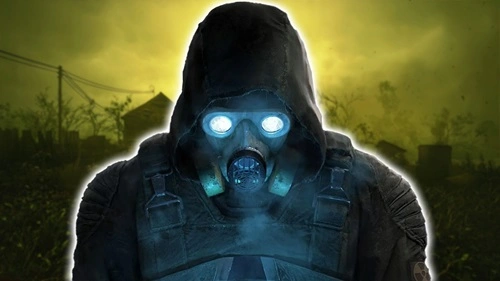The STALKER series holds a special place in the hearts of gaming enthusiasts worldwide. Known for its eerie atmosphere, immersive storytelling, and challenging gameplay, the franchise has built a loyal fanbase since the release of the first title, STALKER: Shadow of Chernobyl, in 2007. Yet, the decision to focus on the remake of STALKER 2 rather than revisiting or remaking STALKER 1 left many fans curious. This article delves into the reasons behind this choice, analyzing factors such as the evolution of the gaming industry, technological advancements, and the strategic priorities of GSC Game World, the developers behind the franchise.
The Legacy of STALKER: Shadow of Chernobyl (STALKER 1)

The first STALKER game, Shadow of Chernobyl, was groundbreaking when it was released. It introduced players to a post-apocalyptic world set in the Chernobyl Exclusion Zone, blending survival horror, first-person shooting, and role-playing mechanics. Despite its critical acclaim and cult following, the game was not without flaws. Players frequently reported issues such as:
- Technical Instability: The game was infamous for bugs and crashes, even after numerous patches.
- Clunky Mechanics: Early gameplay systems, including shooting and inventory management, felt outdated compared to modern standards.
- Graphical Limitations: While impressive for its time, the graphics have since aged poorly compared to today’s visual expectations.
While Shadow of Chernobyl is beloved, GSC Game World seemingly decided against remaking it, despite its popularity. Let’s explore why.
Why Remake STALKER 2?
The decision to prioritize STALKER 2 over STALKER 1 can be attributed to several key factors:
1. Future-Oriented Development
When GSC Game World announced STALKER 2: Heart of Chornobyl, it was clear that the developers wanted to revitalize the series and attract a new generation of players. A sequel, rather than a remake, offered the opportunity to move the story forward, introduce fresh gameplay mechanics, and leverage modern technology to its fullest potential.
By focusing on STALKER 2, GSC Game World could simultaneously cater to longtime fans of the franchise and capture the attention of new players who might not have played the original game.
2. Technological Advancements
The development of STALKER 2 has been centered on using cutting-edge technology, including the Unreal Engine 5. This advanced engine allows developers to create vast, highly detailed open worlds with stunning realism, improved AI, and seamless gameplay mechanics.
Remaking STALKER 1 would have required a complete overhaul to bring it up to modern standards. Given the game’s dated systems, this process might have been as resource-intensive as creating an entirely new title. GSC Game World likely saw more value in investing those resources into a new game rather than revisiting old ground.
3. Market Demand and Nostalgia
Nostalgia is a powerful driver for remakes, but not all older games benefit equally from the remake treatment. While Shadow of Chernobyl is cherished, its story has already been experienced by most of its fanbase. On the other hand, STALKER 2 introduces new narrative elements, fresh challenges, and expanded gameplay, which can generate greater excitement among players.
The gaming industry has shifted toward sequels and reboots that expand the lore of existing franchises rather than rehashing what has already been told. This approach aligns with the interests of both developers and players, offering something novel while maintaining a connection to the original material.
4. Financial and Logistical Considerations
Game development is a costly and time-intensive process. Remaking STALKER 1 would require a significant investment, including redesigning levels, reworking graphics, and modernizing gameplay mechanics. While it might please hardcore fans, it’s uncertain whether such a project would have wide commercial appeal.
In contrast, STALKER 2 represents an opportunity to create a more marketable product. With the rise of open-world games and advancements in storytelling, the sequel has the potential to reach a broader audience and generate higher returns on investment.
5. Expanding the Franchise’s Scope
By focusing on STALKER 2, GSC Game World can build upon the existing universe and expand its lore, attracting both new and returning players. The sequel provides a chance to address criticisms of earlier titles, such as technical issues and clunky mechanics, while incorporating modern gameplay innovations.
Moreover, creating a successful sequel positions the franchise for further growth, including potential spin-offs, DLCs, and other media adaptations. A remake of STALKER 1 might have been a more limited venture in terms of long-term potential.
The Challenges of a STALKER 1 Remake
While a remake of STALKER: Shadow of Chernobyl would undoubtedly excite its dedicated fanbase, the challenges involved cannot be overlooked. These include:
- Preserving the Original Experience: Any remake risks alienating fans if it deviates too much from the original, yet modernizing the game without making significant changes would limit its appeal to new players.
- Balancing Nostalgia and Innovation: Striking the right balance between honoring the original game and incorporating contemporary design elements is a daunting task.
- Competition in the Gaming Industry: With many studios releasing high-quality remakes and sequels, a STALKER 1 remake would need to compete against both newer games and other nostalgic titles.
Conclusion
The decision to remake STALKER 2 instead of STALKER 1 reflects GSC Game World’s focus on future growth and technological advancement. By creating a sequel that leverages modern tools and expands the franchise’s scope, the developers aim to reach a broader audience while staying true to the essence of the series.
While a remake of Shadow of Chernobyl remains a dream for many fans, the excitement surrounding STALKER 2: Heart of Chornobyl suggests that the franchise’s best days may still lie ahead. Fans of the original can take solace in the fact that the series is evolving, ensuring its legacy remains alive for years to come.


